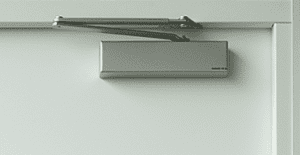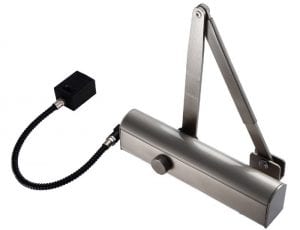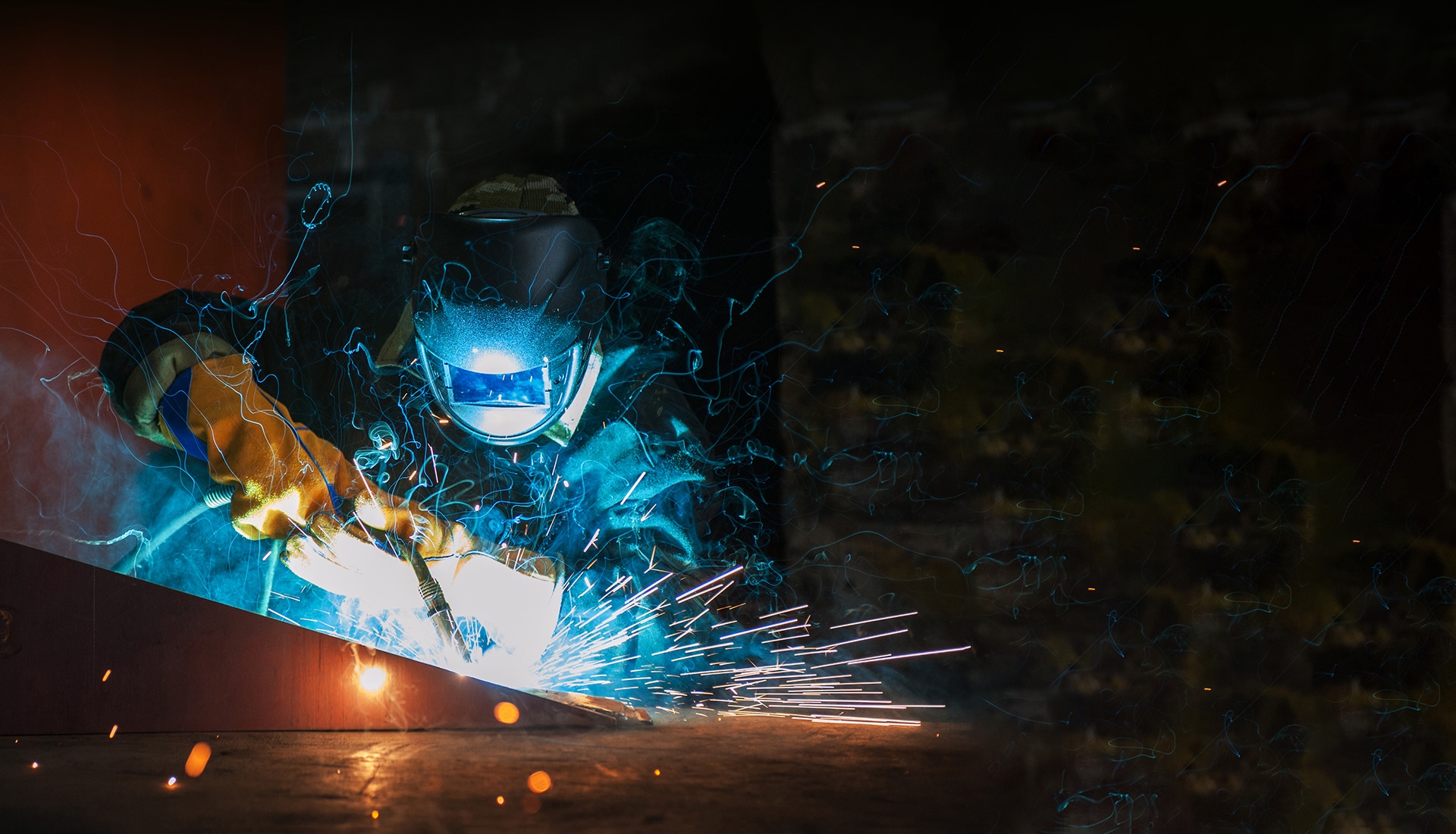Essential fire door hardware
Fire doors are an integral part of a building’s overall fire safety system. They help to prevent a fire from developing into something substantial by restricting Oxygen supply and preventing the spread of flames and smoke. This makes it easier to evacuate the building, easier to locate and extinguish the fire and reduces the amount of damage caused. Here, we discuss what door hardware is essential for your fire door to save lives.
It is illegal to wedge a fire door open in a public place, as it presents a risk to life. It can lead to serious penalties, including insurance voidance, fines or even prison. Therefore, legally, fire doors must be self-closing to ensure the door acts as a barrier against a fire. Here, we discuss what door hardware is essential for your fire door to save lives.
Overhead Door closer

Conventional overhead door closer
These devices are essential on fire doors as they enable a door to close itself properly after use. This ensures a barrier is formed and the building is split into sections, compartmentalising any potential fires and stopping them progressing. Research and development has now allowed modern closers to close softly, rather than slamming shut. This reduces the risk of finger trapping or damage to the door/frame.
Overhead door closers typically come as a box that mounts to the door, with a swinging arm fixed to the frame. However, ‘hidden’ overhead closers are also available so the door doesn’t have any bulky mechanisms visible.
Door closers are installed with tension on the units; however, this will need to be adjusted as the building is occupied. As time goes by, new builds will ‘settle’ which will alter the internal pressures and affect the doors. A correctly adjusted closer is critical to maintaining a fire door and regular service inspections should be performed.
Floor spring
Floor springs are another form of door closer. They are almost invisible as they are fitted to the floor. This makes them more expensive than conventional closers as they are trickier to install. Nevertheless, floor springs are a great alternative as their clean look makes them adaptable to all architecture. The minimalist design makes floor springs a perfect addition to glass doors, but they are suitable for all materials.
A floor spring is very effective when fitted to an oversized door. Traditional closers are often not strong enough or too awkward a shape for large and heavy doors. Whereas floor springs will bare heavy loads and fit all sizes, making them a great substitute to an overhead closer.
Fire door holder

Automatic door holder
As mentioned before, it’s illegal to wedge a fire door open. However, in high traffic areas such as schools or hospitals, it is practical to keep a fire door open. Using an electromagnet mounted to the wall, or an automatic door closer will hold the door open. Then, when released upon a trigger – ie a fire alarm – the door (fitted with a closer) will close itself. The door can be connected to a fire alarm system via mains electric or radio controlled via a link to the fire alarm.
Door holders must comply with BS 7273-4: 2015, which the Fire Industry Association provides guidance on here. In a nutshell, this certification recommends how to actuate mechanisms that unlock, release or open doors in the event of a fire.
Door seal
Door seals prevent flames and smoke from escaping round the edges of the door/round the hardware. They often come in the form of an Intumescent strip. Intumescent materials expand and swell when exposed to heat, so they seal any gaps around the door, preventing the fire from crossing the threshold. They must be used around the door edges, or alternatively applied to the frame.
However, occasionally smoke alone isn’t hot enough to make the Intumescent material expand. To counter this, Intumescent strips often have an integrated brush seal which prevents smoke from passing through the gaps, forming a cold smoke seal. This is very important as smoke is often more dangerous than fire itself as it spreads much quicker and can kill faster than flames.
A correctly installed and serviced fire door will become almost invisible when properly functioning as it literally becomes part of the building fabric. Nevertheless, it is a vital part of the fire safety strategy, so regular maintenance is as important for fire doors as it is for fire alarms or extinguishers.
For more advice on fire safety and exit routes, check out our ‘Fire Exit Routes: Your guide to getting out safely’ blog.











